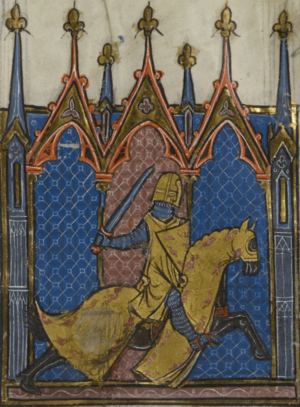Gautier de Dargies facts for kids
Gautier de Dargies (born around 1170, died around 1240) was a famous trouvère. Trouvères were poets and musicians in northern France during the Middle Ages. Gautier came from a place called Dargies. He wrote many songs and poems, and his work was very popular. He influenced many other musicians of his time.
Who was Gautier de Dargies?
Gautier de Dargies was a very active and important trouvère. He wrote at least twenty-five poems, and twenty-two of them still have their original music. These songs are found in sixteen different old songbooks called chansonniers. He was one of the most recorded composers from the Middle Ages.
Gautier mostly wrote about courtly love. This was a popular theme where a knight would admire a noble lady. He also brought a type of song called a descort from the Occitan region into Old French. He wrote three descorts with their music. He also took part in two jeux partis, which were like musical debates.
Gautier's Life and Family
Gautier de Dargies appeared in old records from 1195, 1202, and 1206. At that time, he was known as a vavasour, which was a type of landholder. By 1236, he had become a knight.
It's not clear if he fought in many battles. However, he might have joined the Third Crusade in 1189 when he was young. Gautier was the son of a man named Sagalo. His family's coat of arms showed red martlets (small birds). This was different from the main Dargies family, which used black martlets.
Gautier had three brothers: Rainaut, Drogo, and Villardus. His wife's name was Agnes. He also seemed to know another famous trouvère, Gace Brulé. Gautier even mentioned Gace Brulé in three of his poems.
His Music and Poetry
As a poet and musician, Gautier de Dargies was very skilled and creative. He often used traditional themes but gave them his own unique twist. He liked to experiment with how his poems were structured. Sometimes, his lines were uneven or very long.
His melodies were also very special. Four of his songs had melodies that didn't repeat. In two of his songs, the musical parts were different lengths from the poem's lines. Also, his music wasn't limited to just one octave. One of his songs, "Se j’ai esté lonc tens hors du päis," has the widest range of notes of any medieval song still known today. The highest note is two full octaves above the lowest!


